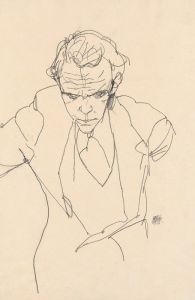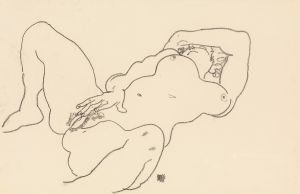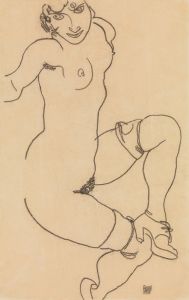
Moa
A hand-painted replica of Egon Schiele’s masterpiece Moa, meticulously crafted by professional artists to capture the true essence of the original. Each piece is created with museum-quality canvas and rare mineral pigments, carefully painted by experienced artists with delicate brushstrokes and rich, layered colors to perfectly recreate the texture of the original artwork. Unlike machine-printed reproductions, this hand-painted version brings the painting to life, infused with the artist’s emotions and skill in every stroke. Whether for personal collection or home decoration, it instantly elevates the artistic atmosphere of any space.
Egon Schiele, an Austrian painter known for his distinctive style and raw emotional intensity, created a body of work that has been both celebrated and controversial. However, there is no widely recognized painting titled "Moa" by Egon Schiele. Schiele's oeuvre primarily consists of expressive portraits, self-portraits, and figurative works that often explore themes of sexuality, existential angst, and the human condition.
Born in 1890 in Tulln, Austria, Schiele showed an early interest in art and went on to study at the Vienna Academy of Fine Arts. He was heavily influenced by Gustav Klimt, a leading figure of the Vienna Secession movement, and this influence is evident in Schiele's use of bold lines and striking compositions. Schiele's work is characterized by its intensity and often features distorted figures, which convey a sense of psychological depth and vulnerability.
Throughout his career, Schiele produced numerous works that have become iconic in the art world. Some of his most famous paintings include "The Embrace," "Death and the Maiden," and "Portrait of Wally." His art often features nudes and explores themes of eroticism, which led to controversy and even legal troubles during his lifetime. In 1912, Schiele was arrested and briefly imprisoned on charges of public immorality, largely due to his provocative drawings and paintings.
Despite the controversies, Schiele's work gained recognition, and he became an important figure in the Expressionist movement. His unique style, characterized by its raw emotional power and innovative use of color and form, has had a lasting impact on modern art. Schiele's ability to convey complex emotions through his art has made him a subject of continued interest and study.
Tragically, Egon Schiele's life was cut short when he died in 1918 at the age of 28, a victim of the Spanish flu pandemic. Despite his brief career, Schiele left behind a significant legacy, with his works held in major museums and collections around the world. His influence can be seen in the works of later artists who sought to explore the depths of human emotion and experience through their art.
If there is a specific painting titled "Moa" by Egon Schiele, it is not widely documented or recognized in the existing literature on the artist. It is possible that the title may refer to a lesser-known work, a misattribution, or a private collection piece not extensively covered in public records. For comprehensive information on Schiele's work, it is advisable to consult catalogues raisonnés or visit exhibitions dedicated to his art.


















